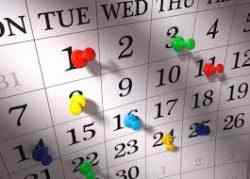Shades of Simon Gray – Nancy McCoy
1. What does this text seem to want its readers to talk about?
This text seems to want its readers to talk about the motives behind their actions and the consequences behind them. The main character goes through this journey after a secret project he has been working on with a group of kids that helps them steal exam answers begins to unravel. Through the journey he goes on he begins to understand how the consequences of the project has affected him and he doesn’t like what he becomes. Another character in the story Devin feels the pressure as her grandmother becomes sick and Simon is barely staying alive. She does a personal investigation on herself and realizes that it isn’t worth Simon’s life to get what she wants, going to a good school. You see throughout the story as characters struggle with life and deal with the consequences of their actions.
2. What connections did you make when reading this text (connections to your own life and experiences, connections to other texts like books, films, etc., connections to your knowledge of the world). How did making those connections help you better understand the book and what it seems to be saying?
I had a similar personal experience as the characters in the book. In high school I had a chance to step back and realize I didn’t like who I was, the way I was acting or the choices I was making and I changed. Throughout the story I was really drawn to the character Devin because of her decision to not got to a great college but a community college instead because she didn’t earn going to a great college and because of her realization that she had been dating someone she didn’t enjoy dating. I feel like I can relate to her being a girl and once in high school.
Making the connections helped me to understand the struggles that the characters were going through and see the personal changes they went through throughout the story. It helped me to understand and relate to the struggles they went through and also reflect on who I once was and where I am now.
3. What are the underlying assumptions about children and/or childhood does the book seem to hold? Do you share those assumptions?
Some underlying assumptions about children and/or childhood the book seems to hold is that in high school students are discovering themselves, making mistakes, that they go through this drama roller coaster, that there are social groups (popular and nerds), that they drink and that appearance is important. I definitely agree to some of these assumptions but there are not such clear cut lines or rules, especially not in high school. I think you will definitely see some of these clichés in society but it isn’t every school and not every teenager.
4. Assess the book’s portrayal of the world of the characters. Does the text try to mirror reality, or does it delve into the realm of fantasy? Does the text’s representation of “reality” for the characters resonate with you? Does it seem believable? Does its believability level affect the way you read the story?
I think that the book is portraying reality and fantasy. I think that the text does do a good representation of reality for the characters does resonate with me because I could relate to the characters and seem how my own high school experience was similar to the one in the book. The part where Simon is in a coma and moving around isn’t believable for me but because the other parts are believable I think it doesn’t really affect the way I read the story. I enjoyed the parts of reality.
5. How does this text relate to other texts you’ve read before? In what ways does it support or challenge ideas other books have put forth?
I have read other books that are similar in that they both have teenagers learning more about themselves and their actions and using that to make better decisions. But I am not very much into mystery or fantasy books. I think that the ideas that this book put forth are similar to other genres and books like the divergent series I read early this semester, that made the main characters question why they were doing things as well as the consequences they dealt with.
6. What seems to be the purpose for the book? Does it seem to fall into any of the categories that often are used when discussing children’s literature (e.g. fantasy, new realism, historical fiction, didactic literature, &c.)? What do suppose the author wanted his or her readers to “get” from reading the text? What evidence can you find in the text itself that supports this?
I don’t really know what the purpose of the book is. Obviously the characters when through some introspective thinking but I don’t necessarily think that was the purpose of the book. When I write it is about a strong feeling, experience or what I wish would happen. I don’t right trying to teach anyone or voice an idea or opinion. I don’t think that the author of this book went out trying do something specific with the book. It could have been an idea they had that spoke to only them. The purpose could have been for the authors enjoyment, a piece of them out in the world impacting other peoples lives.
I don’t think this falls into any category that is often used when discussion children’s literature. I think it touches on a lot of topics that some teachers may try to stay clear of, death, afterlife, cheating etc.
I think because a lot of the characters do some discussing of their motives and dreams that the author wants its readers to also think about their own motives and dreams. I think being conscience of why do or don’t do things is a great tool for young adults. It reminds them that there are consequences and rewards for things that they do and if they are aware of this it may cause readers to make better decisions and think into the future.


